Best Practices in Teacher Pay: Beginning Teacher Pay and Regional Competitiveness
A comprehensive, professional compensation plan includes layered pay strategies that build on one another to ensure the recruitment and retention of a high-quality workforce. This is the sixth in a series of blogs highlighting best practices in teacher pay featured in detail in BEST NC’s report, Teacher Pay in North Carolina: A Smart Investment in Student Achievement.
Beginning Teacher Pay
Each year, North Carolina public schools hire around 8,000 new teachers. This represents more new hires of bachelor’s degree holders than some entire industries, including Public Administration, Real Estate, Arts and Recreation, and Agriculture & Forestry. Unfortunately, while onboarding a large number of teachers each year, North Carolina struggles to retain many of these new hires. In 2021-22, attrition for beginning teachers was 13%, compared to 7% for experienced teachers.
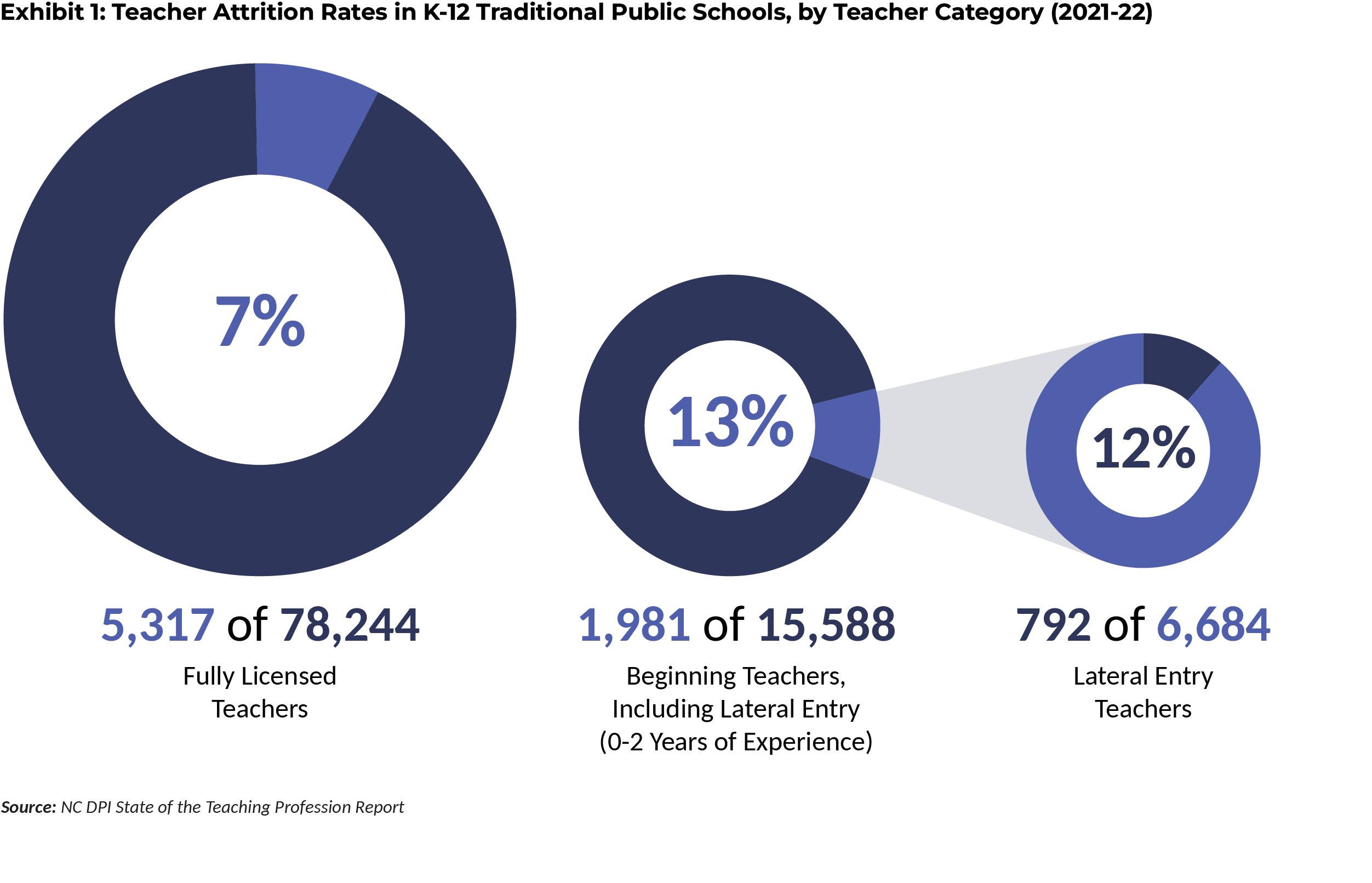
Nationally, beginning teacher pay has been demonstrated to be a powerful predictor of teacher attrition. A National Center for Education Statistics (NCES) analysis of first-year teachers in 2007-08 revealed that teachers with beginning salaries above $40,000 had 10% less attrition after one year and 9% less attrition after four years than teachers with beginning salaries less than $40,000. Today, more than a decade after this analysis was completed, average pay for beginning teachers in North Carolina has still not reached $40,000.
The low level of beginning teacher pay in North Carolina also likely contributes to the leaking pipeline of teacher candidates seen across North Carolina educator preparation programs (EPPs). Between 2013 and 2017, a full 47% of those who enrolled in North Carolina EPPs were not employed as teachers in North Carolina within two years of graduation. This is a clear indicator that early teacher pay in North Carolina is not attractive enough to keep these North Carolina EPP enrollees teaching in-state, or perhaps teaching at all.
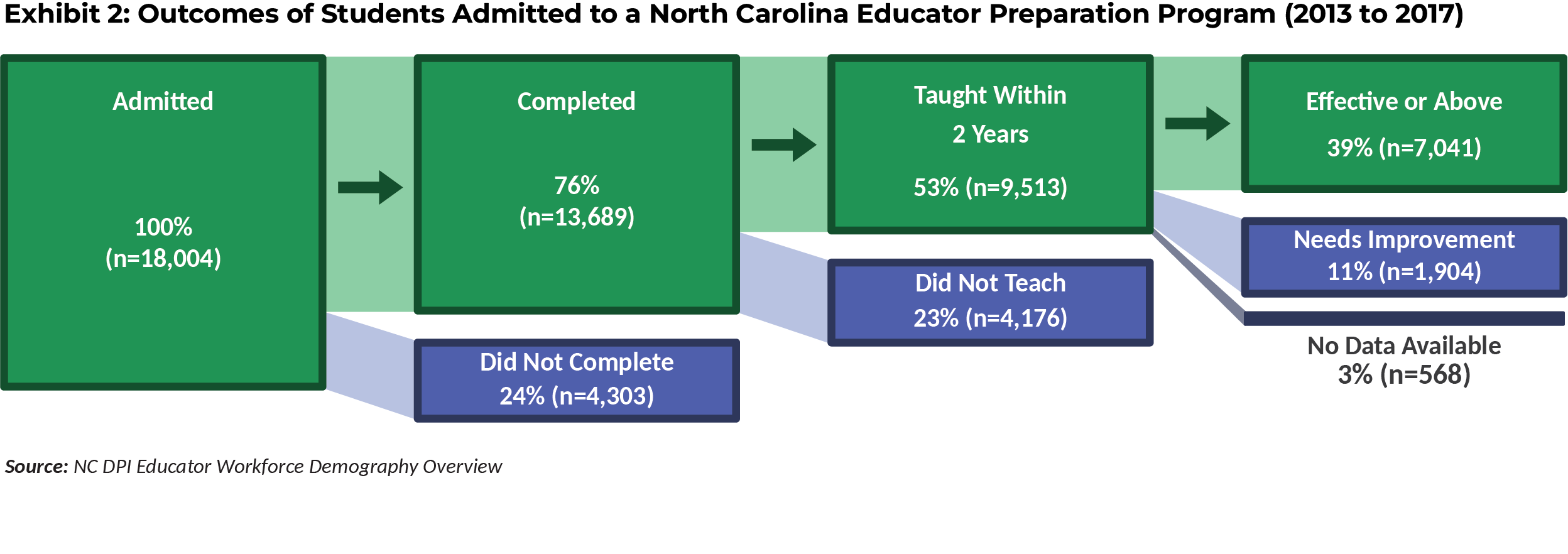
Falling Behind in Our Region
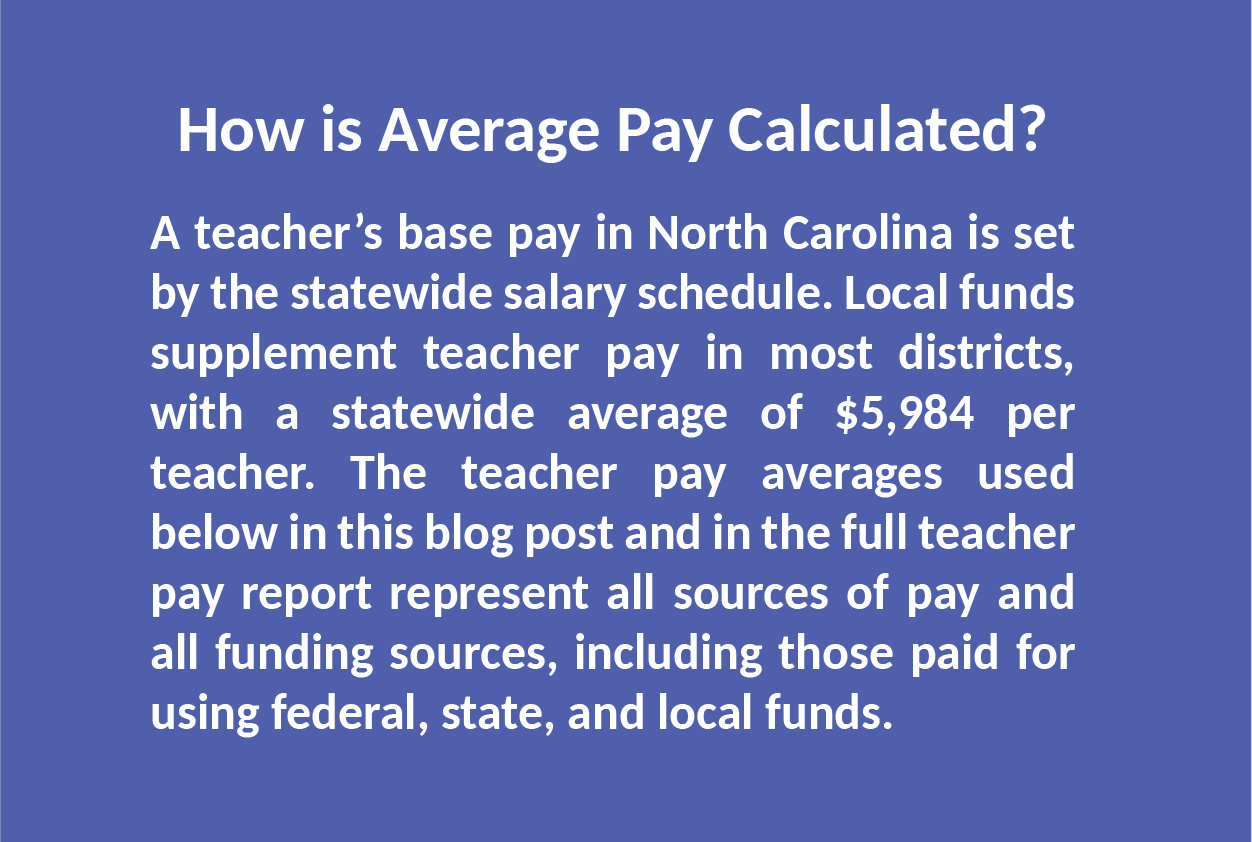
While the importance of beginning teacher pay amongst North Carolina teacher candidates is clear, it is also important to recognize that competition for talent is regional. This means it is critical to consider the extent to which teacher pay in North Carolina is competitive with surrounding states.
Looking at other states in the Southeast region, teacher pay in North Carolina is not as regionally competitive as it once was, with a growing disparity at the front end of the pay schedule. Based on estimates from 2022-23, after adjusting for cost of living, average teacher pay in North Carolina ranked 31st out of all states and 7th out of 13 states in the Southeast region. Worse yet, average beginning teacher pay in 2021-22 (latest data available) ranked last in the region after adjusting for cost of living.
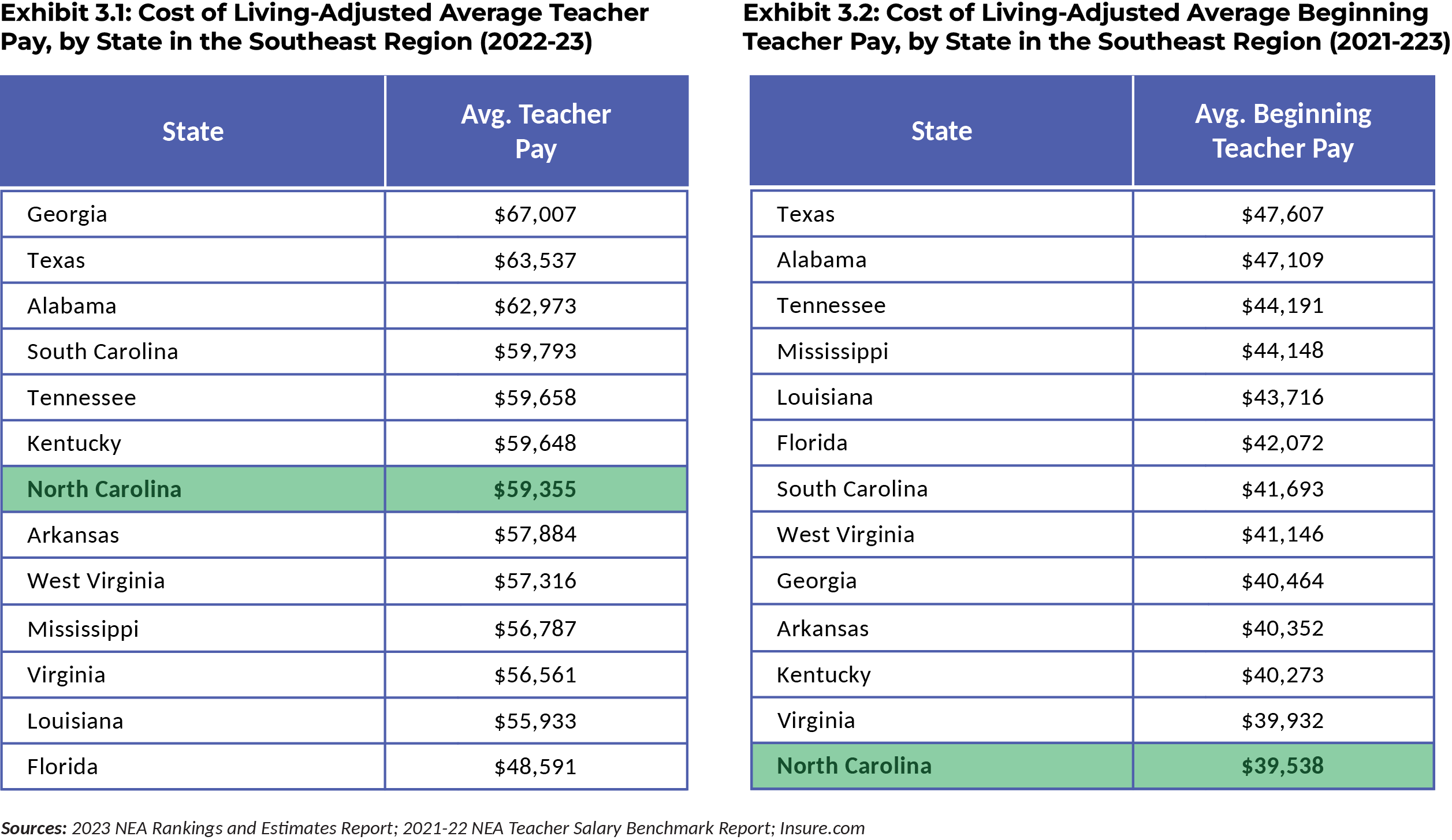
Note: The 2021-22 Beginning Teacher pay figures do not reflect the additional $70 million in Supplement Assistance Allotment funds that was appropriated in the 2022 state budget.
The average and beginning teacher pay comparisons above do not reflect significant investments in teacher pay that other states are implementing which may further imperil North Carolina’s regional competitiveness. Below are just a few of the reported increases in our region in the coming years. Note that several states have recently approved increases to beginning (or minimum) teacher pay, which is where North Carolina is most behind.
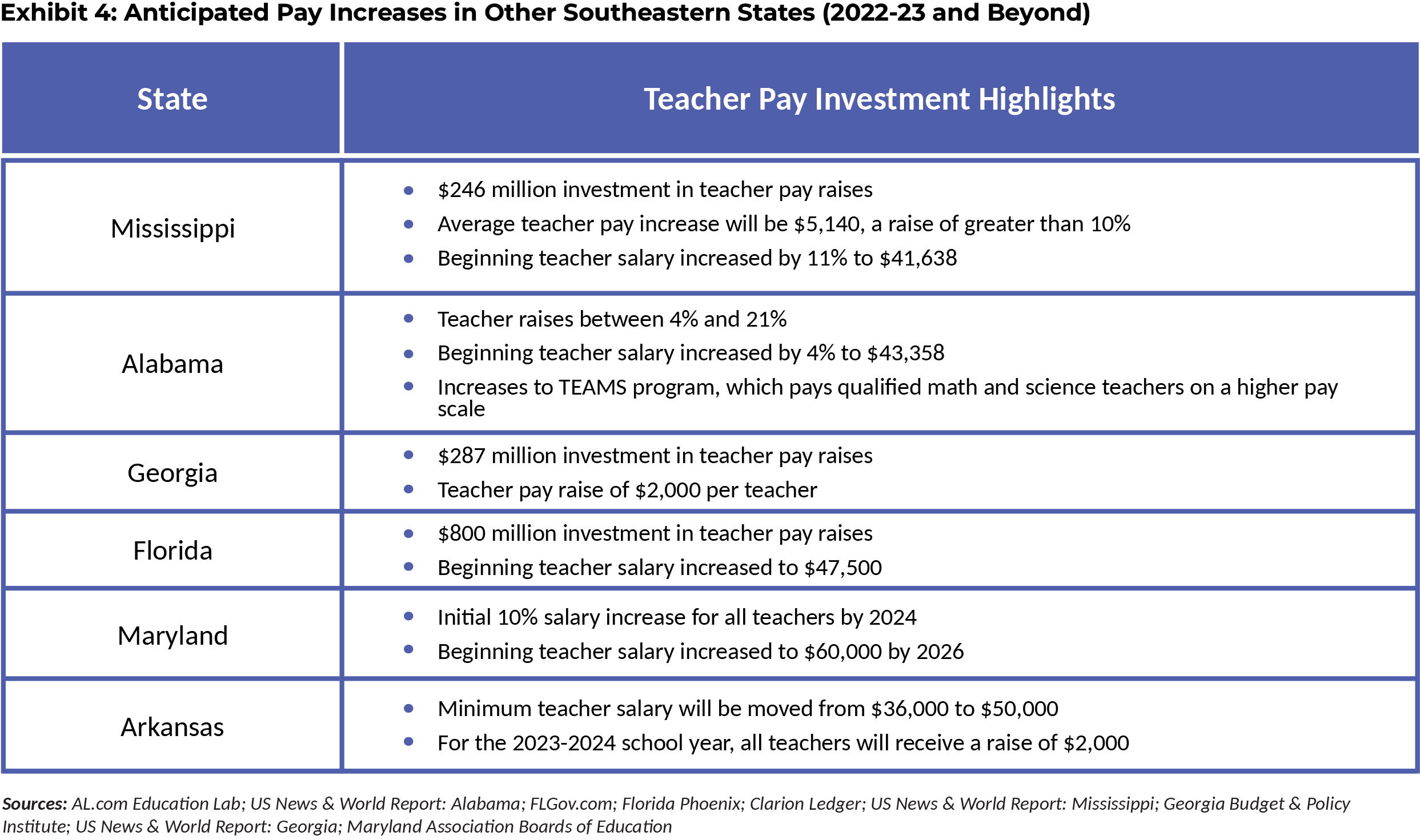
Note: Maryland is considered a part of the Southeast region for the purposes of data collection in some contexts, but not others. A $60,000 starting salary would equate to $50,875 when adjusted for cost of living in North Carolina.
In order to close the gap between North Carolina and its regional competitors and enable North Carolina to recruit and retain top teaching talent BEST NC recommends “raising the floor” for teacher pay.



